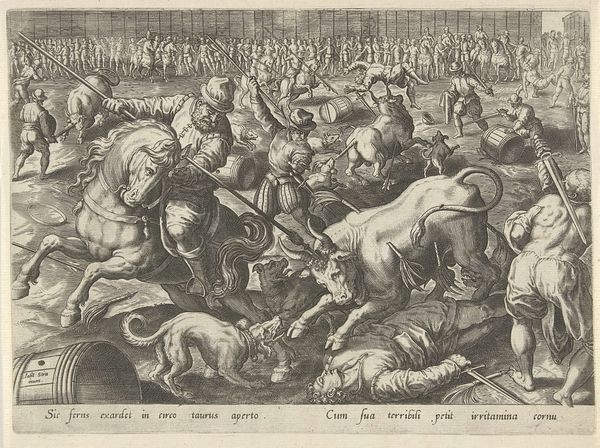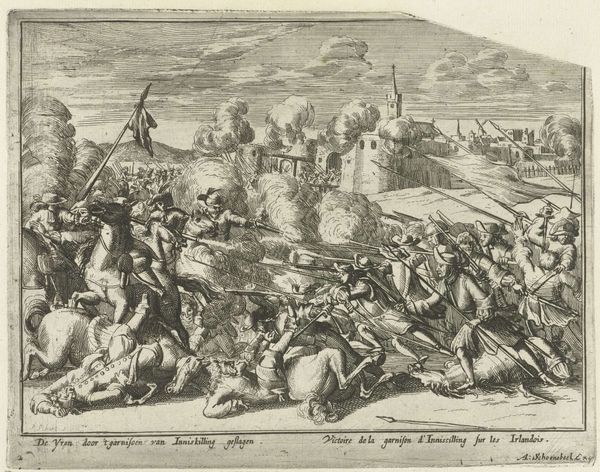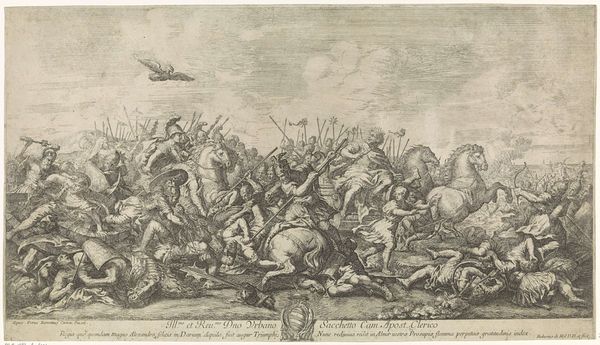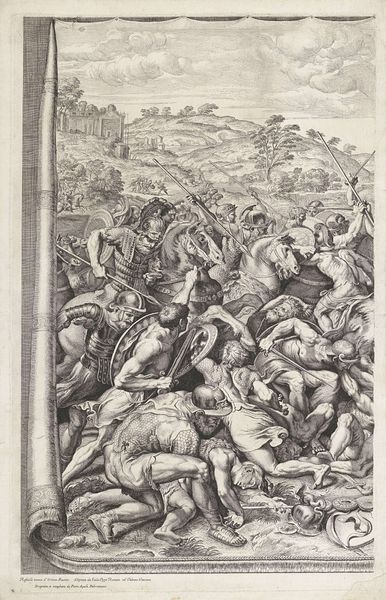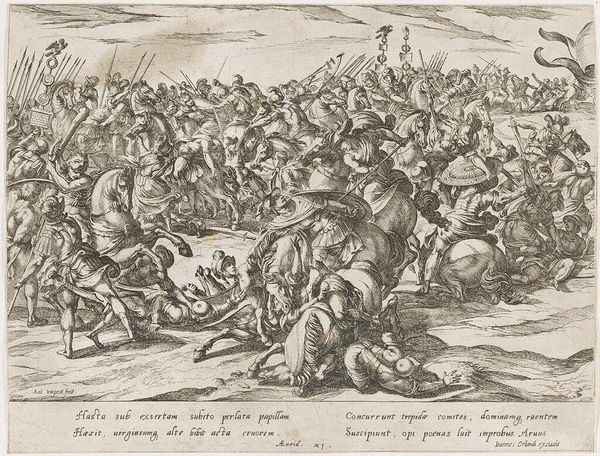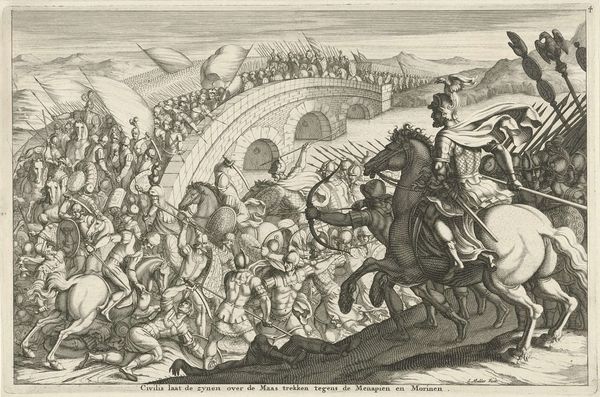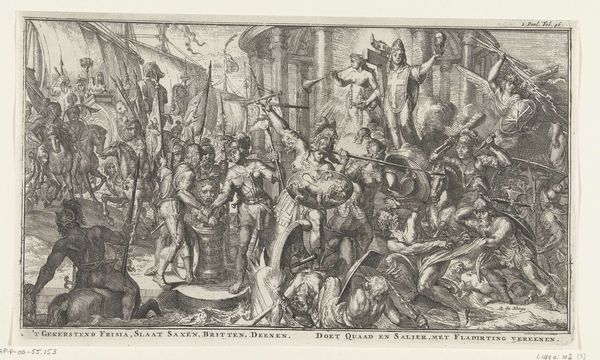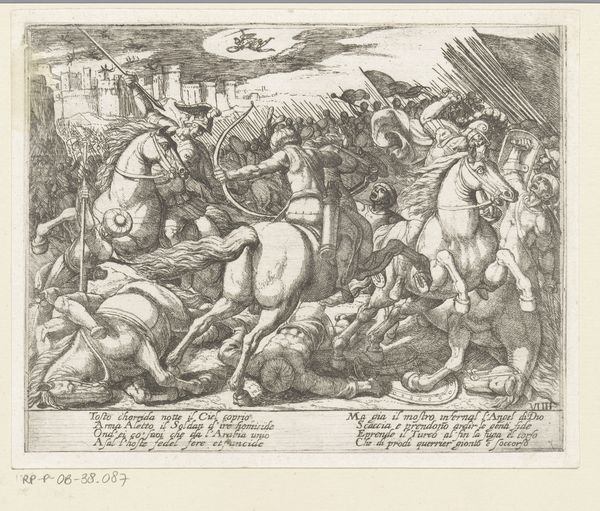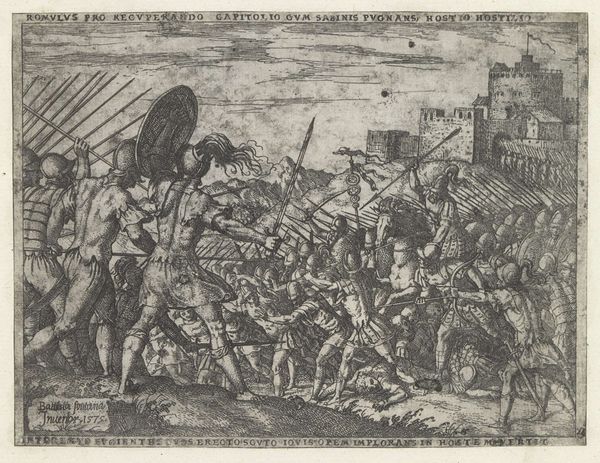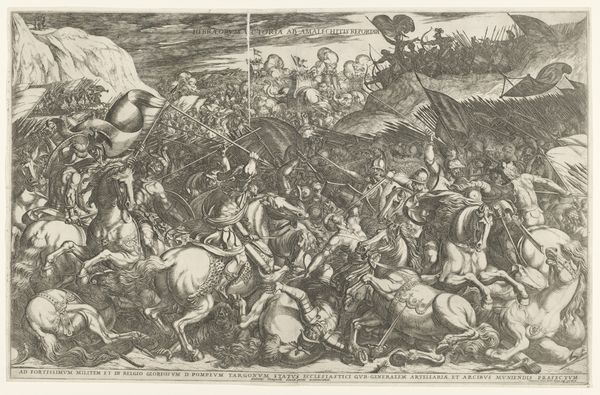
Duitsers komen om Civilis te helpen bij Bonn de Romeinen te verslaan, 69-70 1682 - 1684
0:00
0:00
josephmulder
Rijksmuseum
print, engraving
#
narrative-art
#
baroque
#
pen drawing
# print
#
genre-painting
#
history-painting
#
engraving
Dimensions: height 221 mm, width 330 mm
Copyright: Rijks Museum: Open Domain
Curator: What a dynamic scene! This print, currently held in the Rijksmuseum, is titled "Germans come to help Civilis defeat the Romans at Bonn, 69-70." It was created between 1682 and 1684. Editor: It’s intensely energetic. The stark contrast and detail, achieved through the engraving, pull you right into the chaos. I’m struck by the sheer volume of bodies. What materials were available to Mulder? Curator: Joseph Mulder worked primarily with engraving and printmaking techniques. This print, made from an engraving, showcases a mastery of line and tone. It was a medium accessible for disseminating historical narratives and political allegories. Editor: I find it fascinating how this print, undoubtedly made through repetitive actions, tries to picture such instantaneous violence. You see all this rendering that takes skill and patience put to the test in such a subject. Curator: Absolutely, and we have to see how these depictions served certain political goals. Visual culture shapes public perception, mythologizes conflict and reinforces power dynamics through chosen heroes. In this period the Civilis tale had some popularity. Editor: True, looking at how labor and these battle prints intersect provides valuable perspective on their influence. I notice, particularly on the dead or wounded, how light glints off different bits of their gear and emphasizes textures through crosshatching. I wonder what kind of distribution network Mulder had, if this reached local artisans or landed gentry. Curator: This piece serves as an entry point into a critical analysis of how history becomes entwined with nationalistic narratives, making it accessible to the wider public. It demonstrates art's capacity to create collective identity. It’s a perfect example of how early modern prints like these promoted both historical understanding and societal ideology. Editor: Thinking of the process makes you consider the distance that's needed for translating events this way. Still, focusing on the materiality really exposes these details of social life back then, so one wonders if Civilis could have pictured the battle this way.
Comments
No comments
Be the first to comment and join the conversation on the ultimate creative platform.

